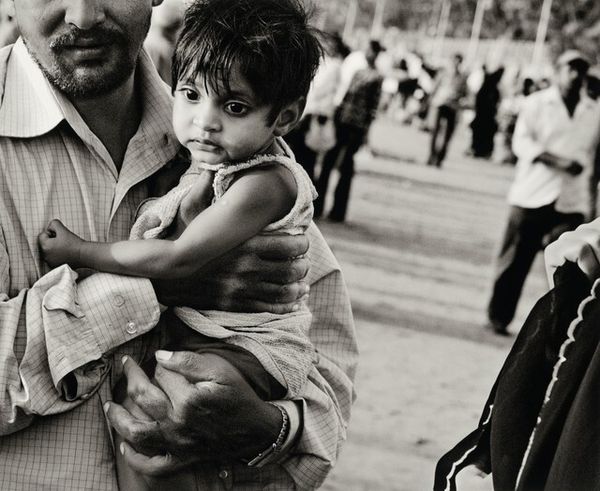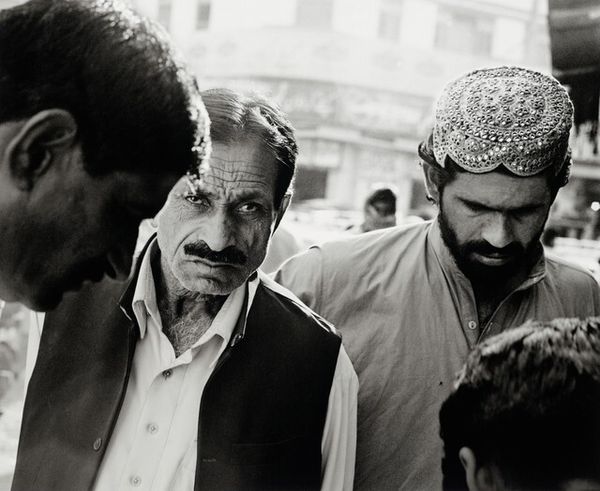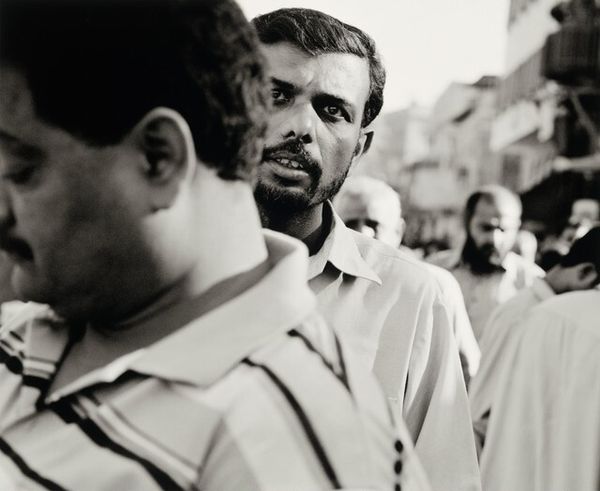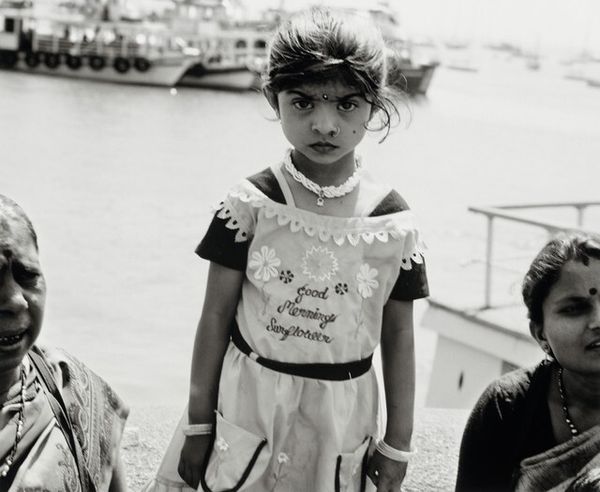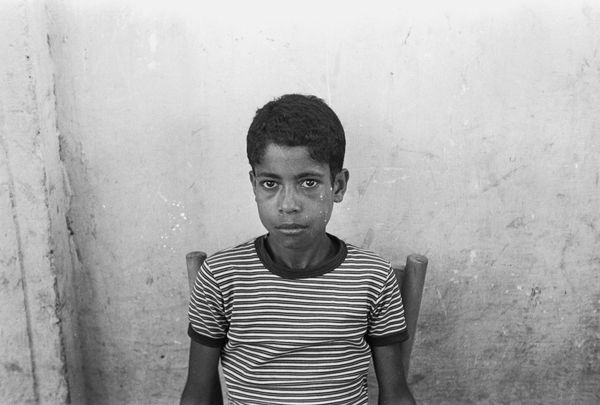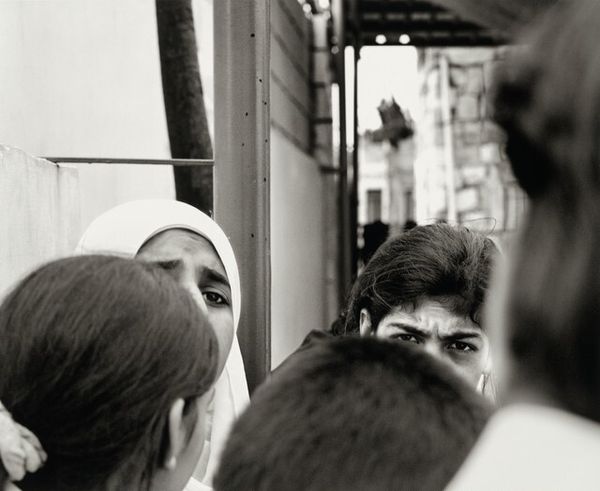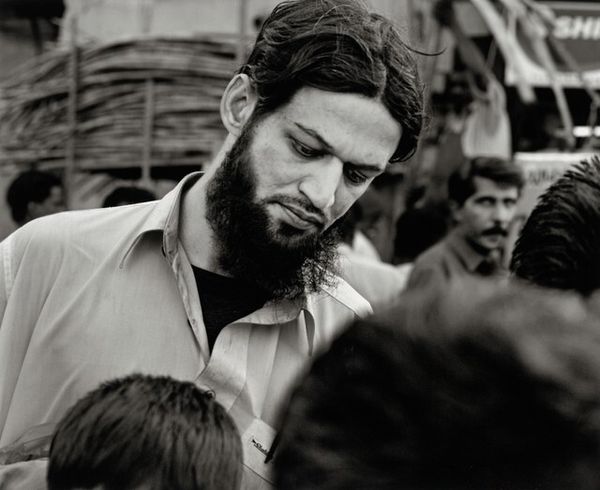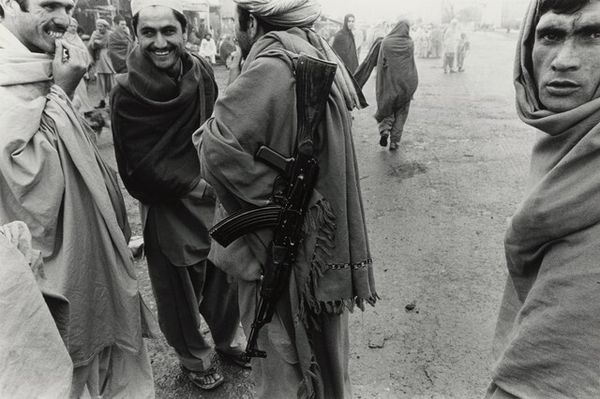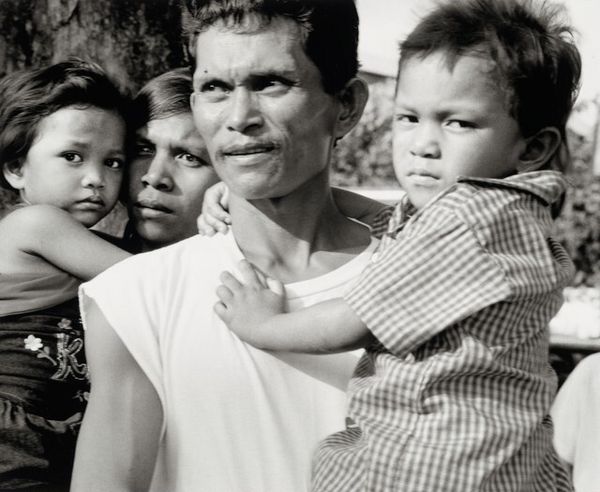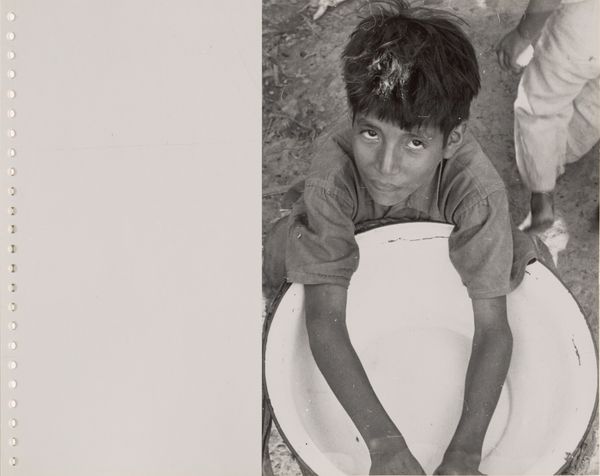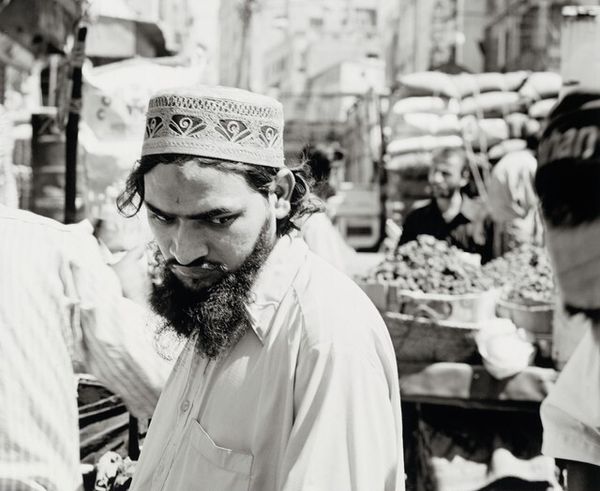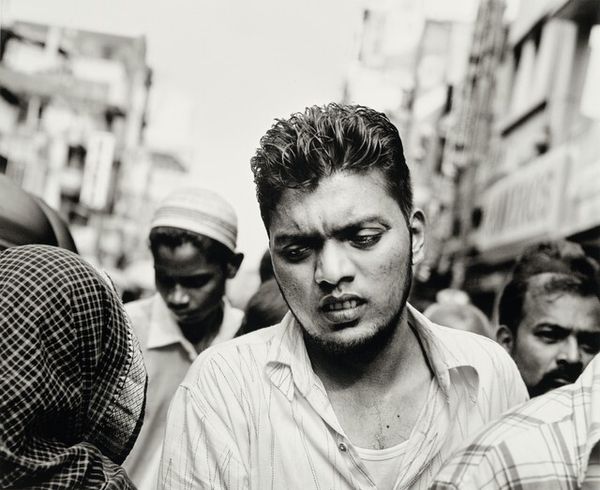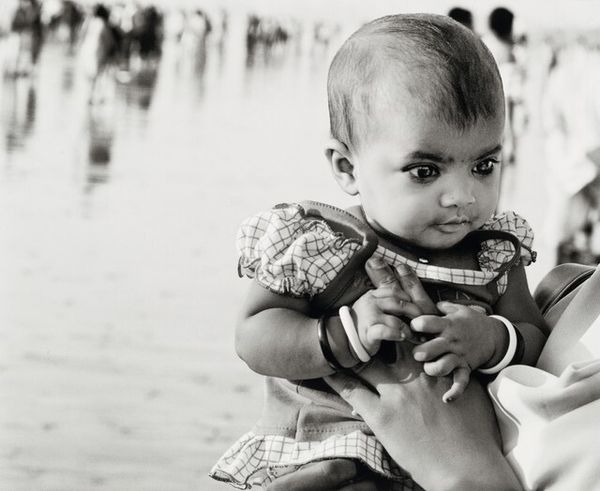
photography
#
portrait
#
contemporary
#
black and white photography
#
asian-art
#
black and white format
#
street-photography
#
photography
#
black and white
#
monochrome photography
Dimensions: image: 40.64 × 49.53 cm (16 × 19 1/2 in.) sheet: 58.42 × 67.31 cm (23 × 26 1/2 in.)
Copyright: National Gallery of Art: CC0 1.0
Curator: The composition strikes me immediately. There’s an almost confrontational directness to the gaze of the central figure, and the monochromatic palette enhances the starkness. Editor: Let's consider this compelling photograph by Leo Rubinfien titled, “Benares, 2006, on the Dasashwamedh Ghat.” The date is noted as possibly spanning from 2006 to 2014. Rubinfien captured this on film, a medium steeped in its own rich history and chemical processes. It makes you wonder about his journey there. Curator: Absolutely, the film grain, though subtle, lends a tactile quality. The high contrast gives it a classic documentary feel, harkening back to early 20th-century social photography. I wonder if the framing, the way he positions these men within the landscape, speaks to hierarchies or social roles. Editor: What roles are we even consuming by documenting this scene? I would wonder what that garment and tie might signify economically? Dasashwamedh Ghat in Benares is a significant site of pilgrimage. Understanding that as the location shifts my attention to the ethics of Rubenfien depicting individuals within the stream of commerce. How did that context affect its creation, circulation, and consumption? Curator: Good point! This makes the gaze that you spoke about earlier so crucial. Does that expression challenge those very conditions by meeting our gaze head-on, without artifice, acknowledging our presence as viewers in a reciprocal relationship? The subtle gradations of gray become crucial—a register of tones holding myriad unspoken narratives. Editor: Perhaps this black-and-white choice, which is so central here, moves it beyond pure photojournalism? Its translation, the material absence of color, grants a level of abstraction? But even then, those very aesthetic choices invite discussion about how such processes can elevate the depicted scene and the people within them. What do we ignore when this gets translated and canonized through photography and circulated in a global audience? Curator: So true. I appreciate how our viewpoints open up different perspectives—one centered on its form and construction, the other interrogating its socio-economic layers. Editor: Indeed! Viewing this photograph with an eye towards material production and form has enriched my engagement with the community in the photograph.
Comments
No comments
Be the first to comment and join the conversation on the ultimate creative platform.
